Our Planet Q&A with Alastair Fothergill
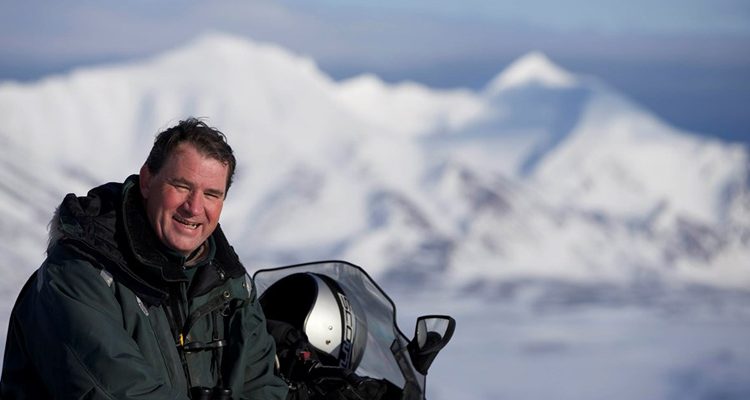
Netflix’s Our Planet – narrated by David Attenborough – recently launched to worldwide audiences. We catch up with director Alastair Fothergill as his five-year mission becomes TV reality. The series was directed by Alastair Fothergill and Keith Scholey, who ran the BBC Natural History Unit and produced The Blue Planet, Planet Earth and Frozen Planet. Alastair and Keith will be engaging in a global conversation about how to protect and preserve our world at the Hay Festival…
- If you could go on safari with anyone living or dead, who would you take and where in Africa would you go?
I’d take my family to the Okavango Delta in Botswana. I love the crystal clear water, which is unusual in Africa, of the Delta and its channels, the scale of the landscape, the fact that you can get out of vehicles and journey in mokoros and on foot. It’s where I made my first wildlife film so it holds an emotional attachment too.
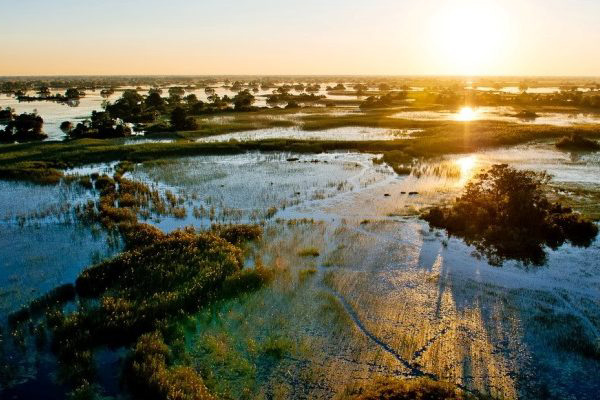
Okavango Delta sunrise, Pelo Camp, Botswana credit Wilderness Safaris
- What is your favourite book set in/about Africa?
The Jonathan Kingdon guides to the animals of Africa are really beautiful. I don’t think people realise what an extraordinary work of art they are.
- What is the single greatest thing we can do to help our planet?
Create less waste. If we dealt with the amount we waste – food and energy particularly – there would be a massive improvement.
- Why did you become a film maker?
I grew up on the north Norfolk coast and had a passion for the natural world as a young boy. When I was at university, the BBC ran a competition in memory of cameraman Mick Burke who died on an Everest expedition. They gave amateurs a camera and I set off to make a film about the Okavango Delta. Back then there were only about ten camps in the Delta and I remember it as an amazing journey – we covered the whole area from top to bottom. We made a bad film but I realised then that being paid to film animals would be a great career. The animals came first and the creative process came later.
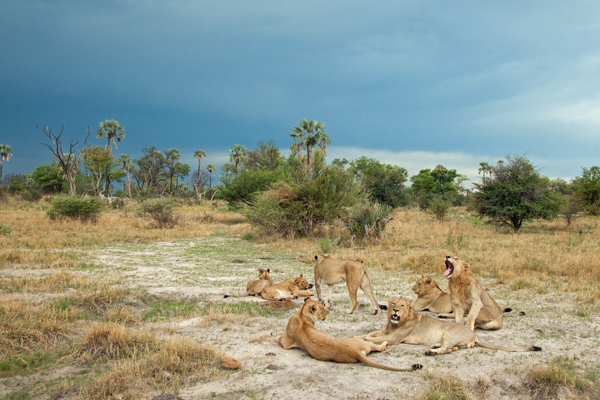
Lion pride, Okavango Delta, Chitabe Lediba, Wilderness Safaris, Botswana credit Simon Hartinger
- What best piece of advice would you give to someone wanting to start a career in wildlife filming?
I think you have to have a passion for the both the subject and communication. You also need to be determined and patient – we hang around a lot, waiting for things to happen.
- What type of nature brings you the greatest of excitement?
I particularly love the Polar regions. I think that’s because I like places where, as a human, you feel very small within the power and forces of nature. Although there aren’t a lot of different animals, those that are there are unbelievably wonderful, and they are all – whether polar bears in the north or penguins in the south – great survivors. The scale of the wilderness and spectacle, when you get 100,000 penguins nesting together or incredible bird cliffs, is also extraordinary.
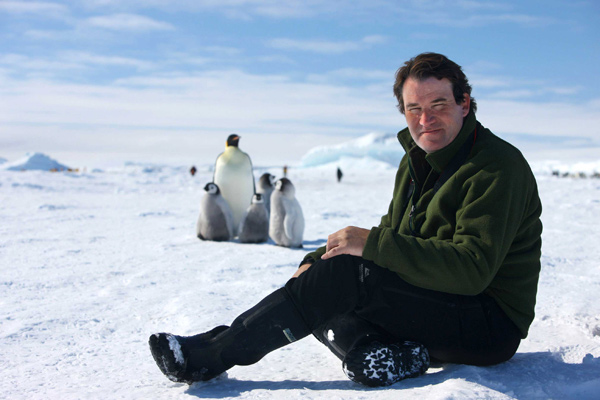
Alastair Fothergill in Antarctica with king penguins – credit Sue Flood
- Tell us an anecdote of an animal that presented a tremendous challenge to film?
The hardest films I have ever made were about chimpanzees. They are our closest relations, utterly intriguing, but a nightmare to film because the move so quickly on all fours. To keep up you are constantly getting garrotted by vines and the 100% humidity is tough too. They’re dark as well, so filming them in the shadows is difficult. I am about to start a movie on polar bears which will also be a challenge. The bears are elusive, and filming on sea ice which is always changing can be dangerous.
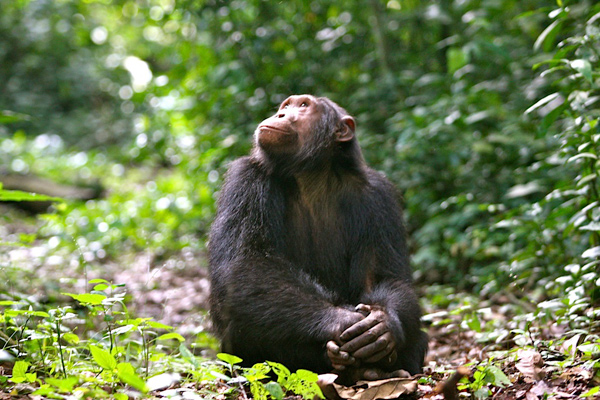
Chimpanzee in the forest, Kyambura Gorge Lodge, Uganda credit Volcanoes Safaris
- What revolutionary filming techniques have made a difference to filming?
On Planet Earth we developed the Cineflex which stabilises a powerful lens with a series of giros. This means you can fly very high, so not disturbing the animals, but still get perfect close ups. On Our Planet we took that system and mounted it on a variety of vehicles -in particular on a snow machine which allowed us to track polar bears, at snow level, from a distance. The bears, whose Inuit name is ‘the wanderer’, are always on the move and as the camera was mobile too (not on a tripod) we were able to get a great sense of movement in the footage.
4K resolution drones have been wonderful to use in the open ocean. When you are far out to sea waiting for something ephemeral to happen, it’s too far to summon a helicopter so launching a drone from a small boat was a great breakthrough for Our Planet. In fact one of my favourite pictures from the whole series is of a blue whale calf emerging from underneath its mother. It’s a wonderfully intimate image from the drone, which 100 metres up without the mother knowing it was there.
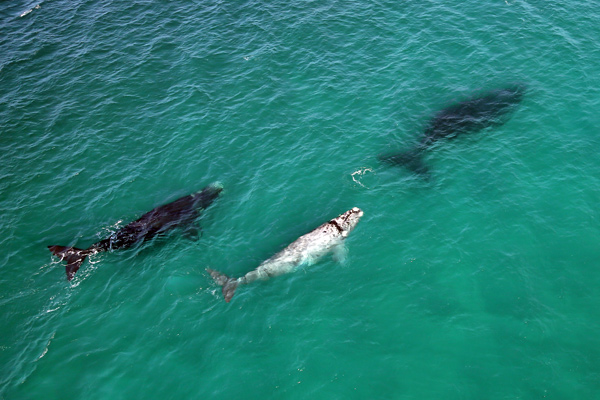
Mother and calf whales at Lekkerwater Beach, De Hoop Nature Reserve, South Africa credit Natural Selection
- What are your views on social media in promoting the environmental messages?
Social media is very important and a very good way of promoting environmental messages to young people who have inherited a damaged planet. When Our Planet aired on Netflix it went to 150 million subscribers in 190 countries. Within the first week it had had 100 million viewers. Young people who really care about the planet don’t watch broadcast TV – they love ‘on demand’ and are great viewers of Netflix, and what is amazingly special about this project is that it will be there to view for years to come. I am also very proud of the website OurPlanet.com that we built with the World Wildlife Fund.
What Next?
Engage in the ‘Our Planet’ debate with Alastair Fothergill at the Hay Festival.
Alastair Fothergill and Keith Scholey
Buy tickets to OUR PLANET – Event 222
Wednesday 29 May 2019, 2.30pm Venue: Oxfam Moot at the Hay Festival, Hay-on-the-Wye, Herefordshire, UK
The directors of the landmark Netflix series Our Planet introduce stories, photographs and film footage of the world’s rarest creatures and previously unseen parts of the Earth – from deep oceans to remote forests to ice caps. They take nature lovers deep into the science of our natural world and reveal the ways humans are affecting the world’s ecosystems, from the wildebeest migrations in Africa to the penguin colonies of Antarctica. Fothergill and Scholey, who ran the BBC Natural History Unit and produced The Blue Planet, Planet Earth and Frozen Planet, engage in a global conversation about how to protect and preserve our world.
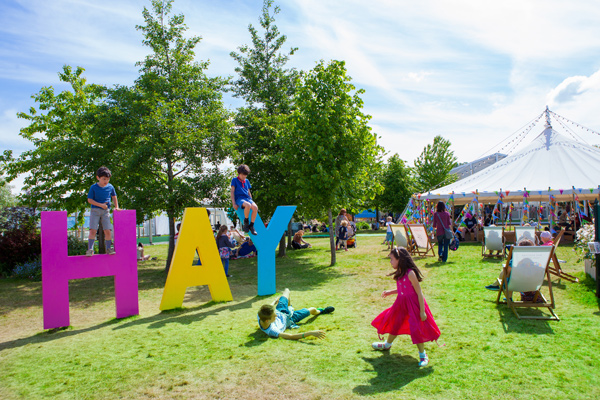
Hay Festival, Hay-on-the-Wye, UK, credit Elisabeth Broekaert
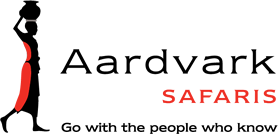
Leave a Reply